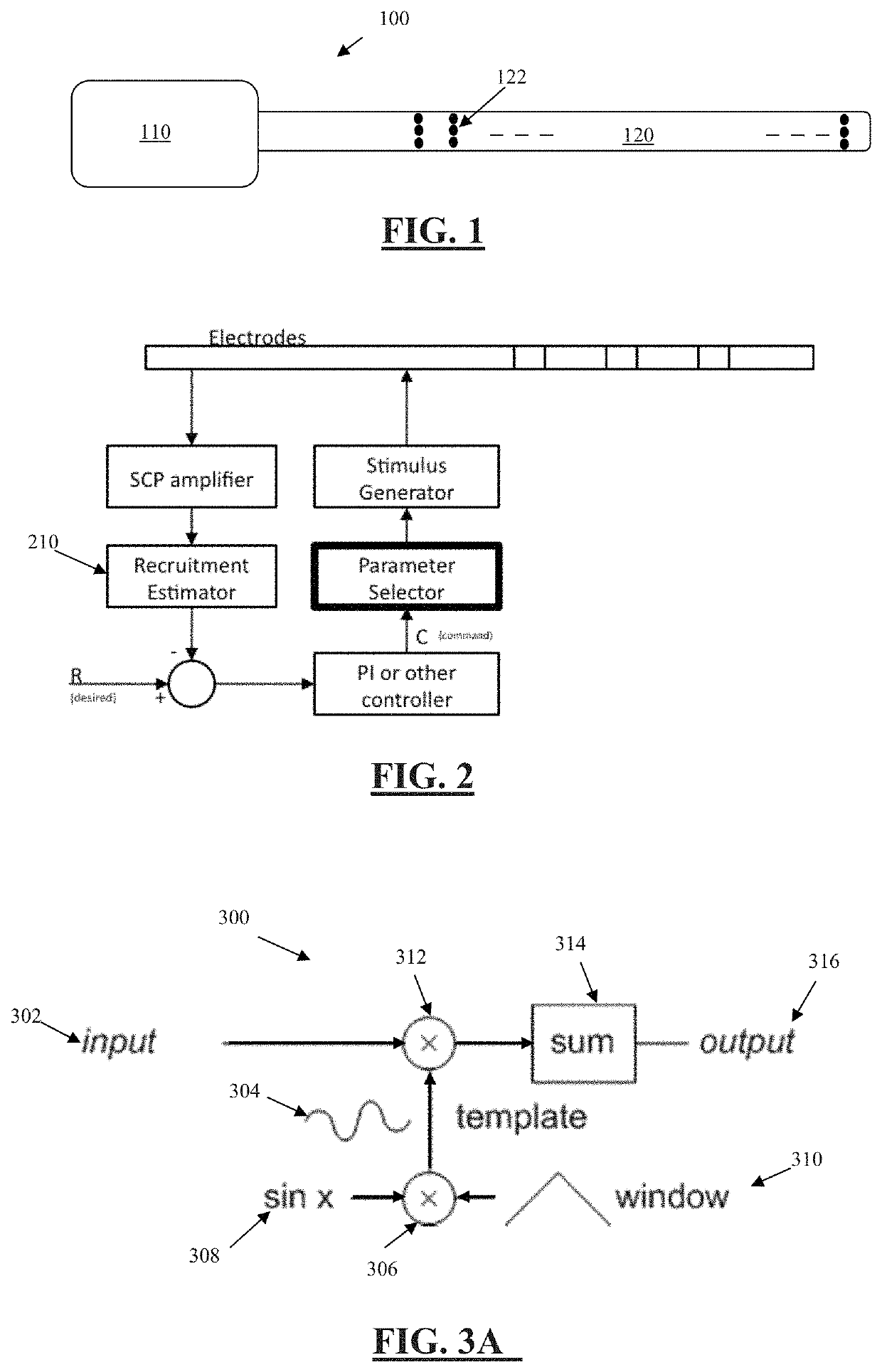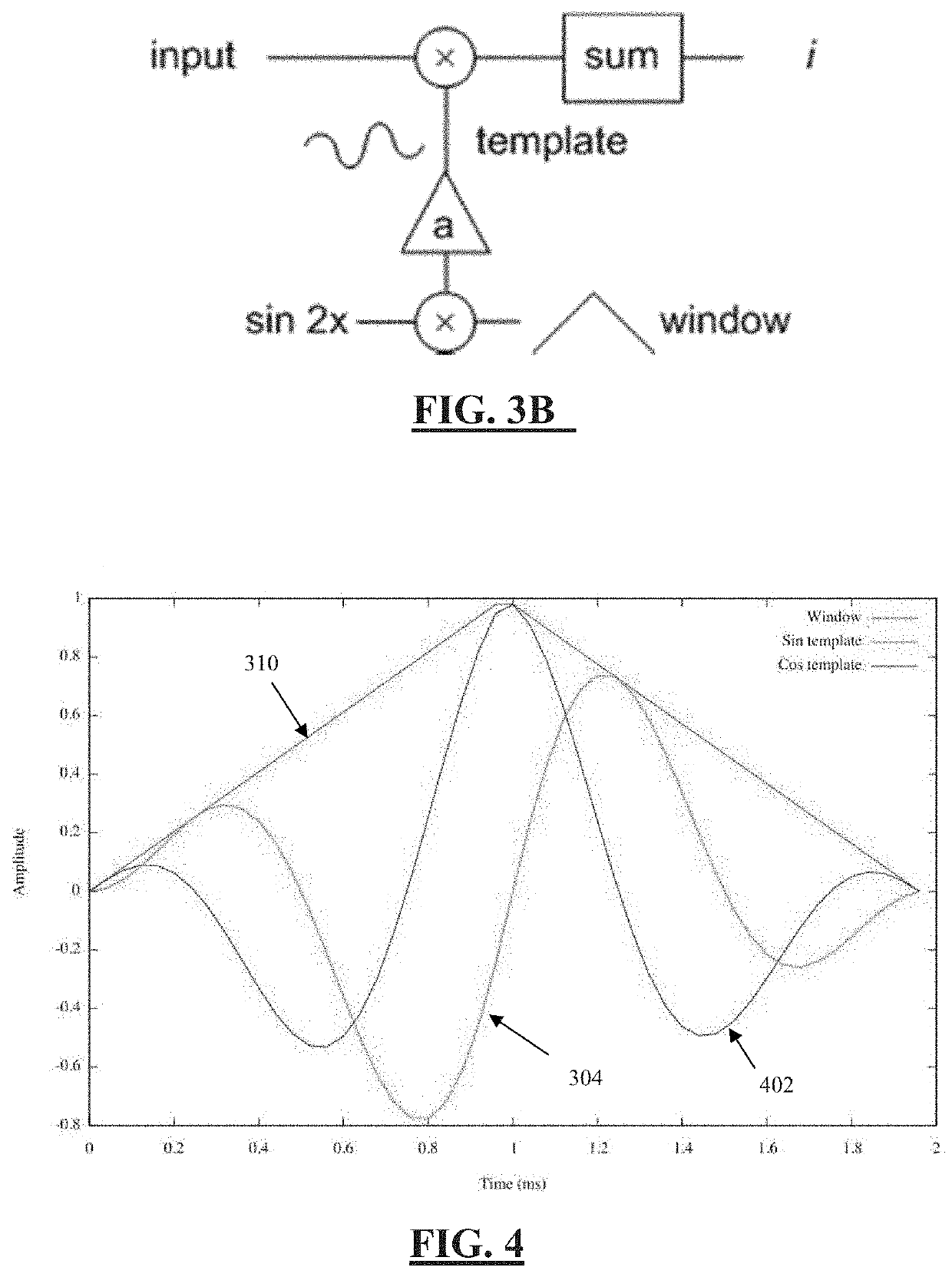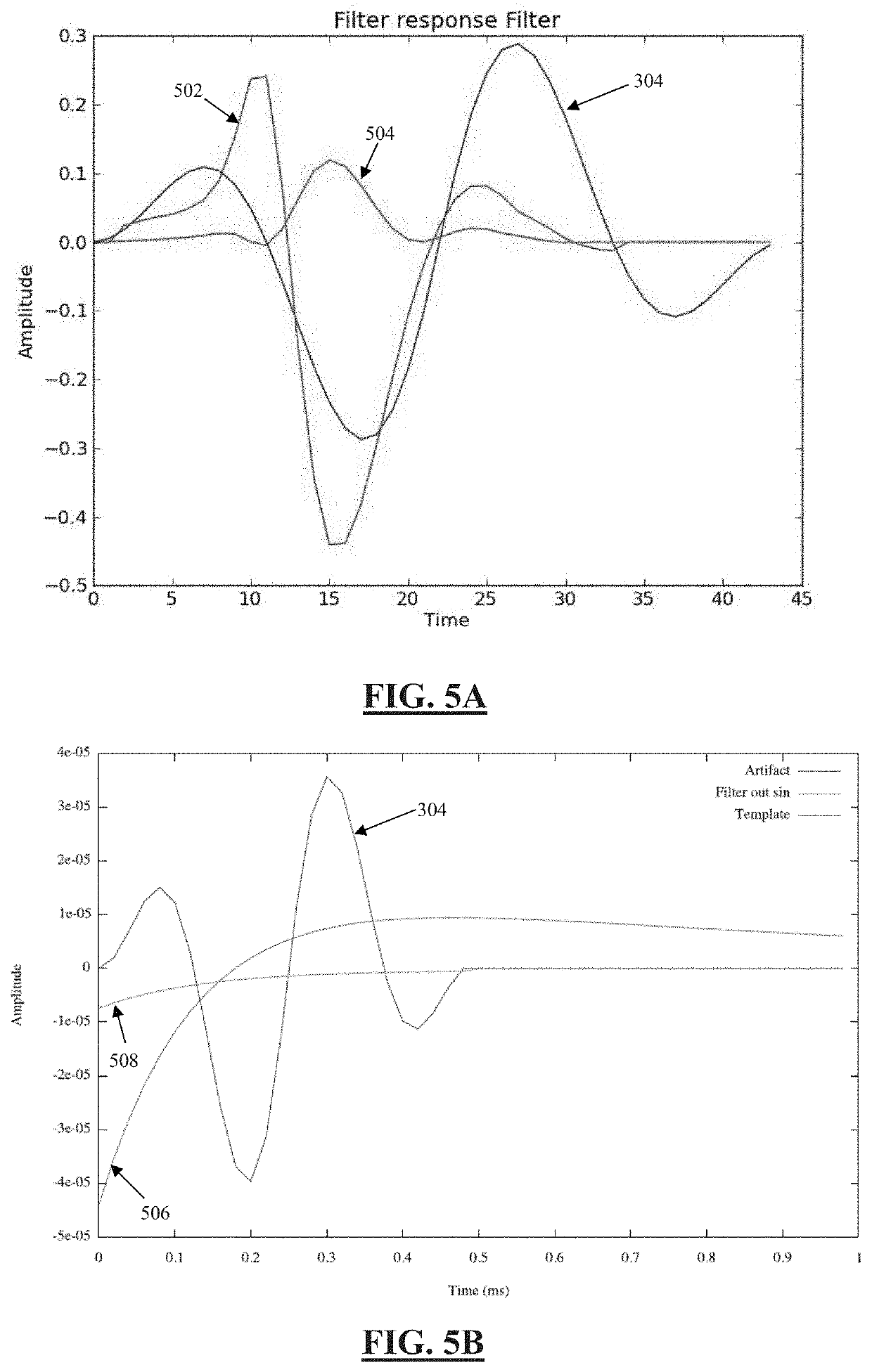Method and Device for Detecting a Neural Response in a Neural Measurement
a neural response and neural measurement technology, applied in the field of neural response detection, can solve the problems of difficult task, presenting a significant obstacle to isolating or even detecting the much smaller cap signal of interest, and the impracticality of implant systems, so as to achieve the effect of better rejecting artifacts
- Summary
- Abstract
- Description
- Claims
- Application Information
AI Technical Summary
Benefits of technology
Problems solved by technology
Method used
Image
Examples
Embodiment Construction
[0077]FIG. 1 illustrates an implantable device 100) suitable for implementing the present invention. Device 100 comprises an implanted control unit 110, which controls application of neural stimuli, and controls a measurement process for obtaining a measurement of a neural response evoked by the stimuli from each of a plurality of electrodes. The control unit 110 includes a storage memory (or other storage device(s), not shown) for storing a lookup table that contains data defining a therapy map, setting out a relationship between applied stimuli regimes and the desired neural response. Device 100 further comprises an electrode array 120 consisting of a three by eight array of electrodes 122, each of which may be selectively used as either the stimulus electrode or sense electrode, or both.
[0078]FIG. 2 is a schematic of a feedback controller implemented by the control unit 110, based on recruitment. An important component of such feedback control is a recruitment estimator 210, whic...
PUM
 Login to View More
Login to View More Abstract
Description
Claims
Application Information
 Login to View More
Login to View More - R&D
- Intellectual Property
- Life Sciences
- Materials
- Tech Scout
- Unparalleled Data Quality
- Higher Quality Content
- 60% Fewer Hallucinations
Browse by: Latest US Patents, China's latest patents, Technical Efficacy Thesaurus, Application Domain, Technology Topic, Popular Technical Reports.
© 2025 PatSnap. All rights reserved.Legal|Privacy policy|Modern Slavery Act Transparency Statement|Sitemap|About US| Contact US: help@patsnap.com



